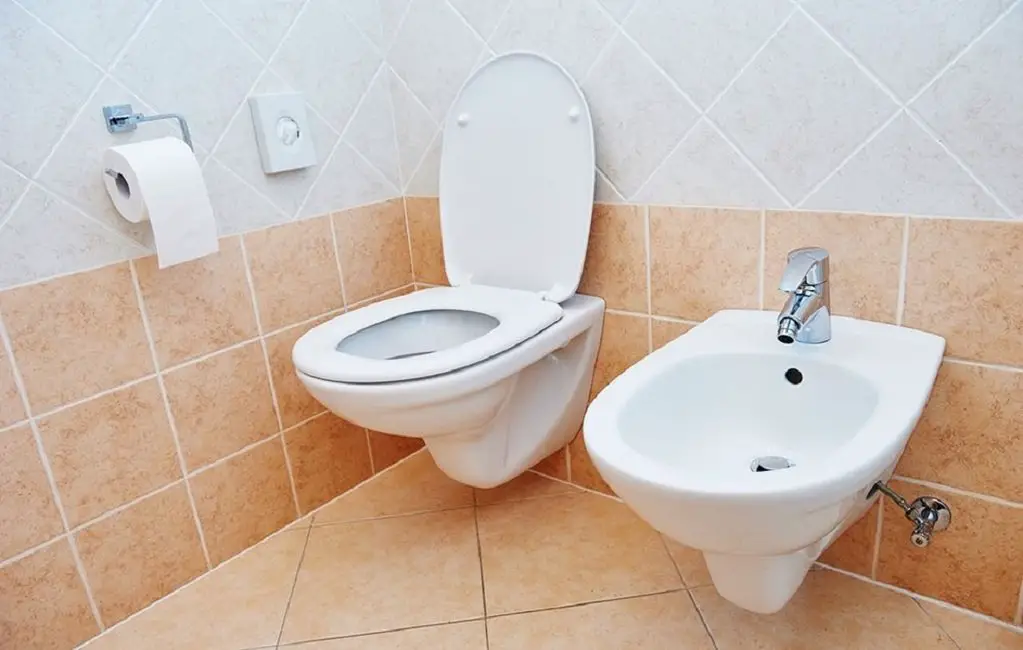Can a Bidet Replace Toilet Paper: Get Clean for Real
Whenever someone asks about whether bidets work better than toilet paper, bidet owners have one of two reactions. We either roll our eyes or go on at length about the virtues of having a water-based backside cleaner. As you may have guessed, I’m in the latter category. Hence, I’m happy to share everything I know about why you should have a bidet already. Unfortunately, in the United States, something happened centuries ago that caused us to associate the bidet with being dirty mistakenly. The result is that we adopted toilet paper instead. Regrettably, this was the wrong choice. Please allow me to help you correct that crazy idea your ancestors passed down with some serious facts.
Can a bidet replace toilet paper? A bidet can, and should, replace toilet paper. Not only are they much more hygienic, but they are also much better for the environment. Unlikely though that seems, making TP is an involved process that contributes to deforestation. Plus, just creating those double layer rolls uses more water than you’d need for days or weeks of bidet use.
A Brief History of Wiping
You need a bidet to replace your TP. Intriguingly, toilet paper was a fantastic advance in potty usage back in sixth-century China. We’ve come a long way since then.
Previous to the invention of paper for the restroom, people used sticks. I wish this were the setup for a joke. Sadly that is not the case. During the Tang Dynasty, a special paper made from bamboo became the go-to wipe for members of the court.
Regrettably, the average person still wasn’t allowed this royal luxury. It would be many years before ordinary people stopped using wood for wiping. Those poo-sticks helped spread diseases along the silk road because often more than one person would use them. Apparently, a good wiping stick was hard to find (no pun intended), so when people discarded them, others would re-use the materials.
Why not leaves (you ask)? Well, picking random, convenient leaves isn’t as good of an idea as it seems. Poison oak, poison ivy, and plenty of other unpleasant or downright toxic options are lying around within reach. Most folks had the good sense not to grab whatever greenage came to hand.
Doubtless, it only took once or twice before folks realized that it wasn’t worth having a smoother surface if it meant pain later. Unless you were a botanist, you probably didn’t know any more than most people do about plants. Wood is generally safer, even if it’s hard on your backside.
Strangely, we still use wood to wipe. However, processing it into paper has certainly elevated our visits to the loo. Still, it wasn’t until eighteen fifty-seven that a man named Joseph Gayetty sold the first commercially available rolls of toilet paper.
Using a Bidet to Replace Your Toilet Paper is Cleaner
Bidets replaced toilet paper in parts of Europe in the sixteen hundreds. The word means ‘pony,’ probably because you straddled them. Originally they were seats with a container for water beneath. Naturally, people had to hand-scrub their genitals to get clean. Nevertheless, it was far better than wiping the surface with a dry stick, paper, or cloth.
You’d think, since it’s so much better, that the bidet would be universal. In some places, it is. However, for Americans, the bidet never really caught on. Although we’re relatively obsessed with sanitation and hygiene, this particular source of body cleansing somehow managed to get a pass. Why did that happen?
For a simple, yet effective home bidet, try the Brondell Bidet Thinline SimpleSpa SS-150 from Amazon. It’s easy to install and has an adjustable pressure nozzle. With no complicated electricity, this is one of the easiest to use for beginning bidet users. Plus, it’s slim, so there’s no seat gap when you put in your new bidet. Grab yours by clicking here.
Bidets Are Not About Sex
America gained it’s European and worldwide (non-native) population before bidets were invented. So they weren’t something that came over on a boat with the first settlers. Because the early American travelers who saw bidets most likely encountered them inside Europe’s brothels, they made an automatic connection.
Bidets were considered a part of cleaning up the mess of sex. In short, they were part of something dirty. Keep in mind that many of the first settlers who came to the USA moved for freedom. However, it wasn’t the freedom to have adult relationships they wanted.
Instead, it was the ability to form more strict religious societies with more definite rules. Hence, premarital or extramarital sex was always ‘dirty.’ Naturally, anything early Americans saw as part of the sex trade was dirty.
It may seem like a logical fallacy. Yet, we accept many wrong ideas every day without thinking. For example, a considerable number of people think that a ‘cold’ is caused by being cold or having wet hair in cold weather. It’s a virus and has nothing to do with marks on a thermometer, nor the dryness of your hair.
Regrettably, ‘common knowledge’ gets passed around, whether it’s true or not. Unfortunately, this stopped a whole country from adopting the best way to clean their body after evacuating waste. If you don’t use a bidet because you’re worried it’s about anything other than the best clean, you’re trapped in that loop of ‘dirty thinking’ without even knowing it.
Using a Bidet to Replace Toilet Paper is Safer
Whenever someone compares using toilet paper to showering by wiping your body with a dry towel, it divides the room. People with bidets nod knowingly. Meanwhile, those who still think they’re a novelty, or mistakenly believe they are uncomfortable to use, laugh. Unfortunately, the laughers don’t realize how accurate this description truly is.
As disgusting as that all sounds, once you learn more about toilet paper, you’ll understand. You need to use a bidet because that nasty white cotton that sticks to your bits is almost as bad as the sticks that came before it. If you’ve ever lived near a paper factory, you probably already guessed that there’s a ton of unpleasant chemicals in your rolls.
Additionally, there’s the issue of waste and pollution. Not only does it take far more water to make TP, but there’s also this issue of trees, factory pollutants. Even the gas used in vehicles to transport all those tons of fancy butt-paper is a problem.
Any way you slice it, toilet paper is a mess. Instead, use a Zomma Bidet from Amazon. They were designed with women in mind so you can get clean quickly from both ends. The self-cleaning head retracts after each use so it won’t collect any messes. You and your bidet both stay clean. Find out more by clicking here.
How Much Water
How much water does the average bidet use for one wash? Usually, it’s about one-eighth of a gallon of water per cleaning. Comparatively, most people use around six sheets per wipe and wipe up to four times per bathroom break. That’s twenty-four sheets or about one-tenth of a roll of toilet paper.
A single roll of toilet paper takes thirty-seven gallons of water to create. That’s a lot of numbers. However, it means that thirty-seven gallons of water will average ten trips to the bathroom if you use paper, or two-hundred and ninety-six visits to the porcelain throne if you have a bidet.
Even if you use half or a quarter as much paper as most, the numbers don’t add up. The only logical conclusion is that TP is much worse for the environment than any bidet. Sadly, that’s before we account for the trees. Furthermore, it doesn’t include factory pollution.
Save the world or at least some water with a Tibbers Bidet. You’ll love the professional twenty-four hour a day after-sales service. Plus, you can feel great about decreasing your ecological impact. Check out the Amazon reviews right here.
Chemicals in Toilet Paper
You may be a person who uses sustainable toilet paper. Maybe you only buy bamboo, in which case, that’s a step forward. Alternatively, perhaps you’re using biodegradable wet wipes because they clean better. That, too, is a slightly better choice.
Unfortunately, biodegradable wipes don’t dissolve fast enough to avoid massive sewage backups. However, the chemicals used to process paper are even more alarming. Bleach is what gives both options their ‘clean’ white appearance. Regrettably, that’s not all.
Furans, dioxin, and other nasty chemicals can easily enter your body through contact. Furthermore, the fluffier your TP, the more formaldehyde was likely used in its creation. Even if you ignore the fact that dry paper doesn’t altogether remove the waste from your skin, you’re still adding all sorts of toxins to your body with every ‘clean.’
Final Thoughts
If you’ve never used a bidet to replace your toilet paper, then it’s understandable. Bidets look weird to Americans and spray warm water at you. You probably worry about whether it will go in places you don’t want it, or squirt out of the toilet.
Yes, it will take a bit of getting used to. However, the great news is that you can get a bidet that lets you adjust both the temperature and pressure of your spray. Once you learn to sit right, you’ll soon discover that you’ve been missing out your whole life and never knew it.
Like the first people to use a stick instead of possibly toxic leaves or toilet paper instead of a stick, you can evolve. More importantly, you’ll love it once you realize what you’re leaving behind, and what’s not getting left on your behind.

